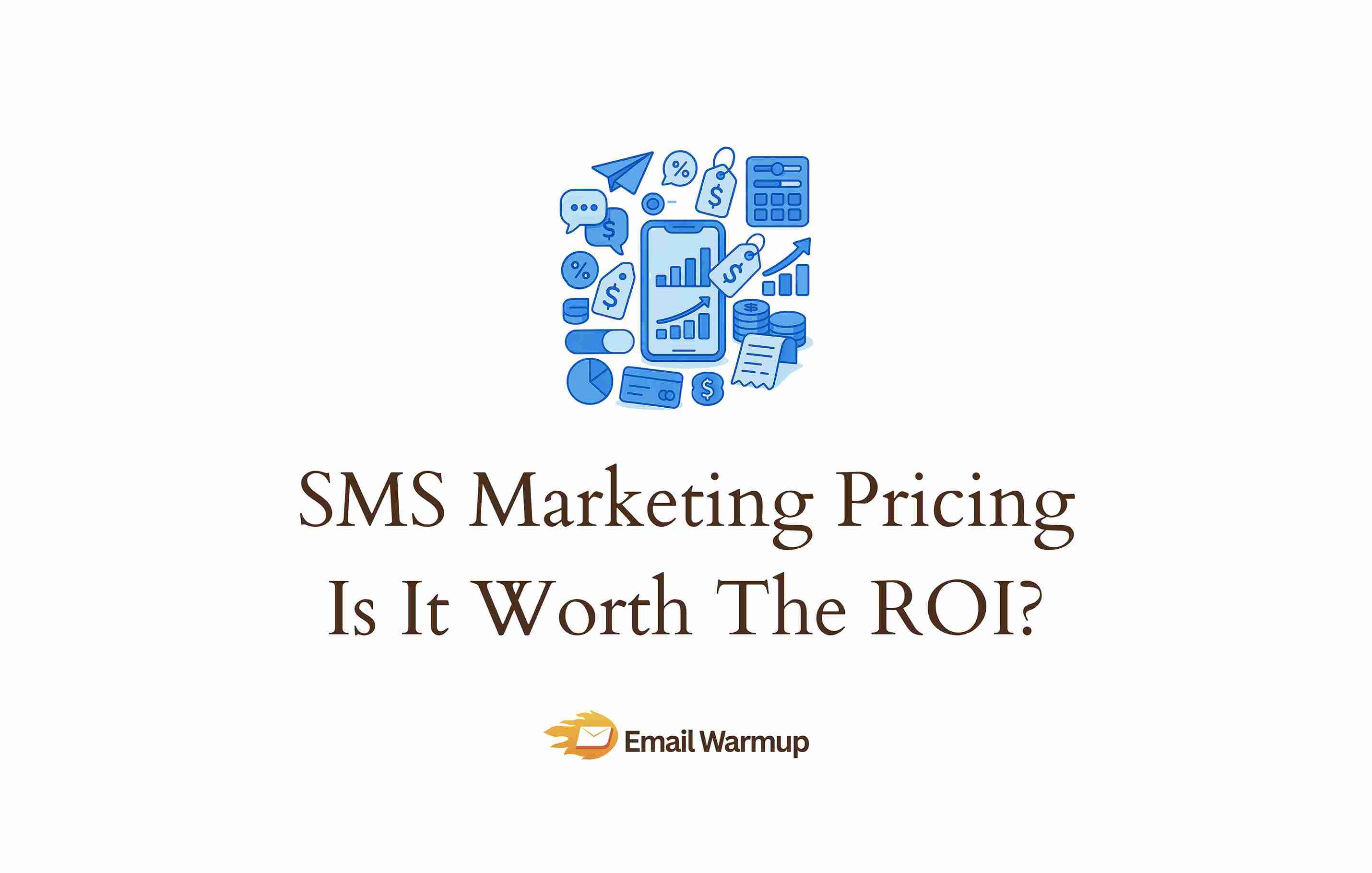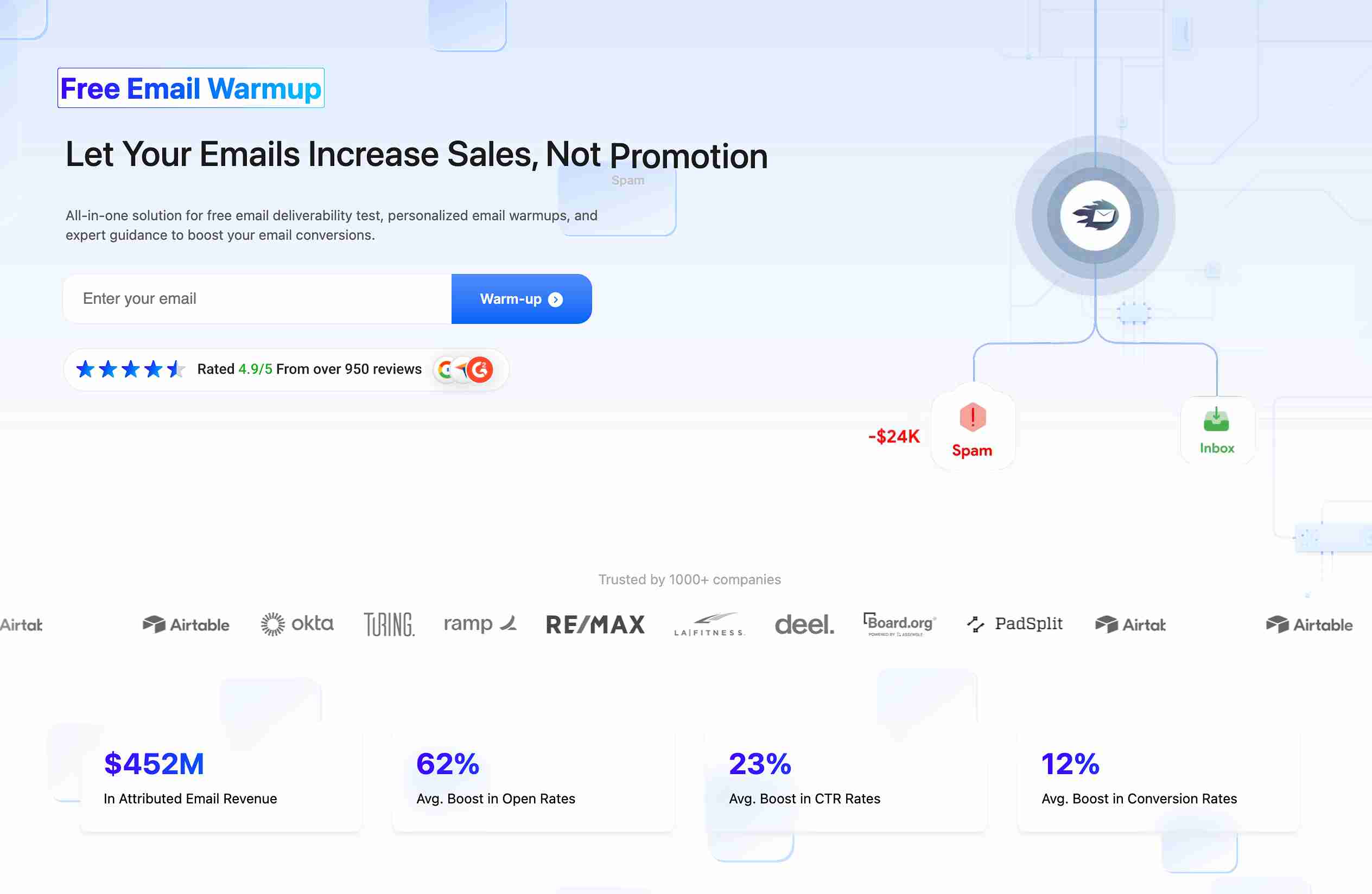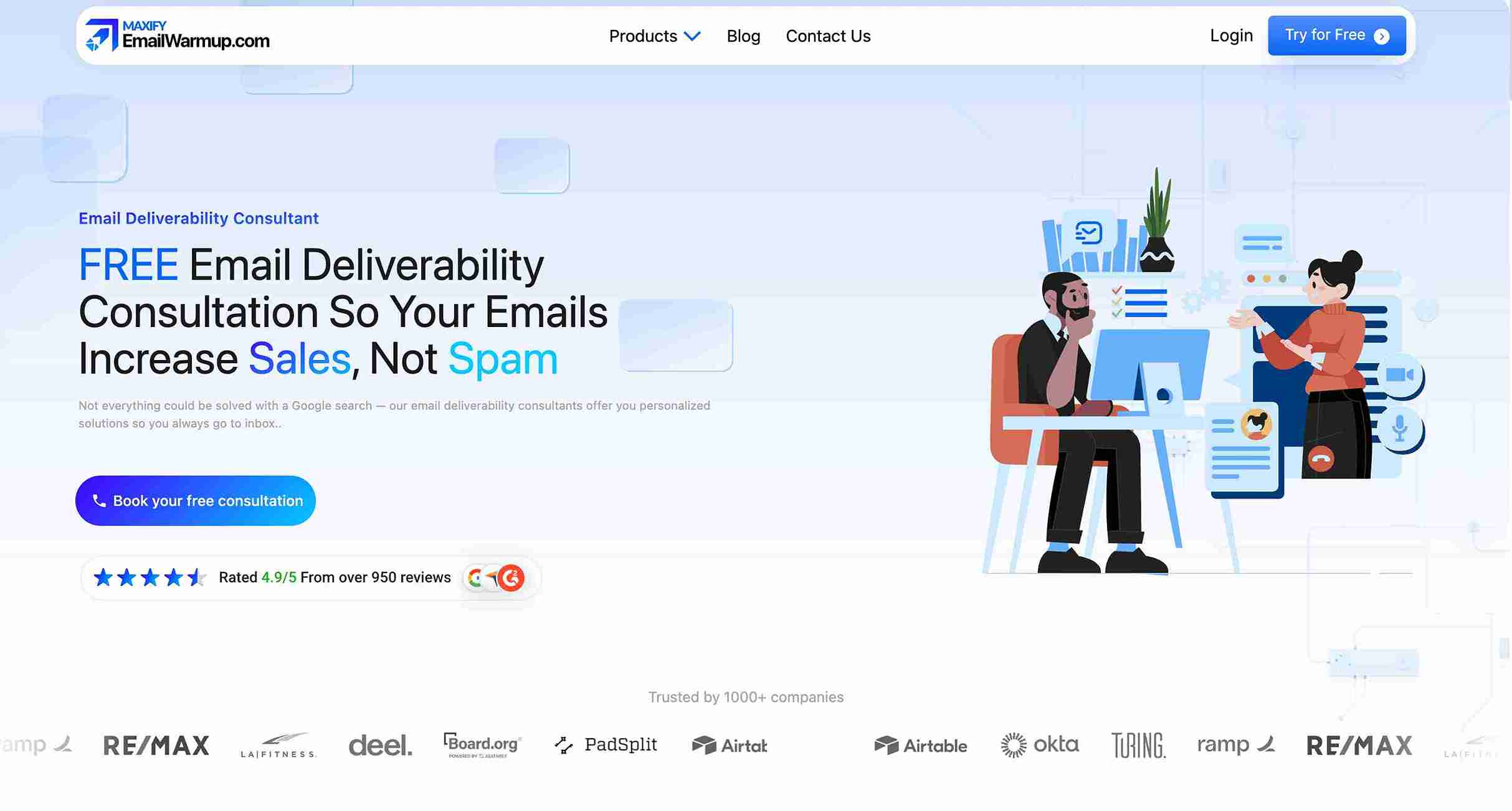
SMS converts like crazy. Open rates hover around 98% (according to vendor reports), and 81% of your customers read your messages within five minutes.
But researching SMS platforms feels overwhelming — rate cards, carrier fees, confusing pricing tiers everywhere. SMS marketing pricing is complex, not because the channel is expensive, but because the consequences of getting it wrong are costly.
I’ve spent years as an email marketing consultant helping brands navigate across channels, and I’ve put in all my knowledge about SMS marketing pricing in this guide, covering:
- What SMS actually costs (factoring in everything)
- What are the ROI benchmarks from brands that got it right
- Why carrier filtering matters more than per-message pricing
- How to keep your sender reputation clean across both SMS and email
- The compliance requirements you can’t ignore (TCPA penalties start at $500 per message)
Let’s dive in and explore how you can use this information about SMS marketing pricing to your advantage and get more value out of your money.
TLDR: SMS marketing pricing at a glance
Before we dig deeper, here’s the quick snapshot for anyone in a rush.
| Sender type | Setup cost | Monthly cost | Per-message cost | Best for |
| 10DLC (US) | $19.50 (Sole Prop/Low Volume) | $1.50-$10 | $0.008-$0.03 | Most DTC brands have predictable volume |
| Toll-free number (US) | $0 | $2.00-$2.15 | $0.008-$0.03 | Smaller lists; compliant messaging |
| Short code (US) | $0 | $1,000+ | $0.008-$0.03 | High-volume senders; brand campaigns |
| International SMS | $0 | $0 | Varies by country | Cross-border audiences |
SMS that actually works without breaking your budget
SMS is powerful, but only if you can afford to send it consistently and keep your messages from getting filtered. It works alongside your email program.
When your SMS flows integrate seamlessly with your email strategy, maintaining a strong email reputation across both channels, you see real incremental revenue.

EmailWarmup.com gives you coordinated messaging that respects your customer’s inbox and your budget:
- Personalized email warmup strategy
- Dedicated deliverability consultant support
- Ready to use email validation API and list hygiene
- Unlimited consultations to plan your SMS and email strategy together
We can set everything up for you. Want to see how it all works?
What does SMS actually cost?
Let’s start with the simplest question — how much does a single text message cost? The answer depends on where you’re sending and what type of number you’re using (more on that in a moment).
US SMS marketing pricing
In the US, most platforms charge between $0.008 and $0.03 per message. Twilio charges $0.0083 per message for the first 150,000 messages monthly (then costs drop). Some platforms, like Omnisend, list around $0.015 per recipient, so a campaign targeting 2,000 customers costs $30.
The variation between providers matters less than you’d think. At this price point, the real cost drivers are volume, sender type, and — here’s what nobody tells you — your deliverability rate.
If 15% of your messages get filtered by carriers, your effective cost just jumped 15%. You’re paying for messages that never arrive.
International SMS marketing pricing
If you’re sending to customers outside the US, SMS marketing pricing varies wildly by destination. UK routes often run around $0.04-$0.05 per message.
Kenya sits at around $0.20. Some high-cost destinations can reach $0.25-$0.50. A campaign to 1,000 international recipients could cost anywhere from $40 to $500, depending on where they’re located.
Most DTC brands start with a US-first strategy and expand internationally only after proving the channel works at home. You need to know your international customers will convert at rates high enough to justify costs that can be 5-20x higher than domestic messaging.
Why your words cost money in SMS
The per-message cost is only part of your actual spend. There’s a hidden ecosystem of fees lurking in the background, and understanding segment limits matters more than most brands realize.

Character limits
SMS charges by segment, not by message. Standard SMS using basic letters, numbers, and punctuation allows up to 160 characters. But the moment you include emojis, special symbols, or non-Latin scripts, you’re using Unicode, which compresses your limit to just 70 characters.
If your message exceeds the segment limit, it automatically splits into multiple segments. You’re charged for each one. A 161-character message costs twice as much as a 160-character message. Keep your SMS at 160 characters or fewer—forced brevity usually improves your messaging anyway (it forces you to focus on what actually matters).
Now, if you add multimedia like images, videos, or interactive links, your SMS becomes an MMS (Multimedia Messaging Service). MMS costs vary by provider—Twilio charges around $0.02, while some marketing platforms charge $0.03-$0.05 or higher.
Most DTC brands skip MMS and use URL shorteners instead to drive customers to web experiences.
Phone numbers and registration fees
Different phone number types come with different setups and monthly costs, plus regulatory fees. The setup and ongoing costs vary significantly based on what you choose.
| Number type | Setup cost | Monthly cost | Registration time | Best use case |
| 10DLC | $19.50 (Sole Prop/Low Volume) | $1.50-$10 | 2-3 weeks | Most brands, consistent volume |
| Toll-free | $0 | $2.00-$2.15 | 2-3 weeks | Smaller lists, recognizable numbers |
| Short code | $0 | $1,000+ | Several weeks | High volume, enterprise brands |
10DLC registration became mandatory in 2023, with carriers blocking unregistered traffic. Toll-free unverified traffic has been blocked since January 31, 2024. You can’t skip registration and hope for the best anymore—carriers are actively enforcing these requirements with immediate message blocking.
10DLC includes brand registration ($4.50 for Sole Proprietor or Low Volume brands) plus campaign vetting ($15), with monthly campaign fees running $1.50 to $10 depending on your provider and volume. Standard brand registration can cost $44, so check which category you fall into.
Carrier pass-through fees get tacked on per message sent, varying by recipient location and carrier. You can’t avoid them, but you can minimize their impact by working with providers who itemize fees upfront (so you know exactly what you’re paying before you commit).
Why compliance isn’t optional anymore for SMS
The biggest cost risk in SMS marketing isn’t the per-message rate — it’s the $500 to $1,500 penalty per message if you violate the Telephone Consumer Protection Act (TCPA). That fine applies to every single message sent in violation, and they add up faster than you’d think.
TCPA requirements you need to know
The TCPA requires explicit written consent before you send any marketing text. Not implied consent. Not verbal permission. Written consent that clearly states who you are, what you’re texting about, and how they can stop receiving messages.
Your consent documentation must include:
- How often you text them
- Your exact business name
- “Message and data rates may apply.”
- “Reply STOP to opt out” or similar clear opt-out instructions
- What types of messages they’ll receive (promotional, transactional, etc.)
In 2025, the FCC closed the “lead generator loophole”—you can no longer share consent across multiple vendors. If someone agreed to receive texts from your mortgage broker, you can’t sell that data to insurance companies without separate consent.
Each business needs individual consent. You can’t buy leads and start texting them without getting fresh, explicit permission first.
The cost of getting it wrong
Capital One paid $75.5 million in a TCPA settlement in 2014 for using automated dialers without consent. The Tampa Bay Lightning paid $2.25 million for unsolicited texts.
Class action lawsuits have bankrupted companies that didn’t take compliance seriously (and the legal fees alone can crush a growing business before the actual penalties hit).
Therefore, you need to maintain detailed records:
- The exact language of the consent agreement
- All opt-out requests, with how quickly you honored them
- When and how consent was obtained (timestamp, method, contact info)
You have a maximum of 10 days to process opt-outs, though processing them immediately is better for your reputation. Most platforms help with this recordkeeping, but the legal responsibility sits with you, not your SMS provider.
What nobody tells you about carrier filtering
Even if your message gets charged, there’s no guarantee it reaches your customer.
Carriers like T-Mobile, Verizon, and AT&T are aggressively filtering SMS to protect their networks from spam. They’re blocking messages without clear feedback and not notifying you beyond a failed delivery receipt (and sometimes not even that).

How carriers decide what to block
Carriers use sophisticated filtering systems that analyze multiple factors simultaneously to determine whether your message gets delivered, throttled, or blocked entirely.
| Filter type | What carriers check | Red flags to avoid |
| Content analysis | Word choice, formatting, links | ALL CAPS, multiple links, SHAFT content (Sex, Hate, Alcohol, Firearms, Tobacco), public URL shorteners |
| Behavioral signals | Sending patterns, opt-out rates | Sudden volume spikes, high complaint rates, and inconsistent sending schedules |
| Reputation scoring | Historical performance | Previous filtering events, bounce rates above 6%, spam reports |
Attempts to bypass filters via obfuscation (like “sp4m” instead of “spam”) typically fail — carriers are smarter than that.
Predictable, steady programs score highest and avoid filtering more often. Carriers roll everything into a daily trust score that influences routing and final outcomes (deliver, throttle, or block).
Protecting your deliverability
Start with small volumes, gradually increase over time, and begin by sending to your most engaged contacts. Building trust with carriers requires consistent, compliant behavior over weeks or months (not days).
Every SMS should include:
- 120-160 characters total
- Natural conversational tone
- One link maximum (preferably a branded domain)
- Your brand name in line 1
- “Reply STOP to opt out”
Match your content to your registered use case—if you registered for promotional messages, don’t suddenly switch to customer service texts because carriers are watching for that inconsistency.
Similar to email reputation, SMS sender reputation requires consistent volume and engagement patterns. Sporadic blasts followed by silence signal spam behavior to carriers.
Why does list hygiene matter more than SMS marketing pricing
Sending to invalid numbers actively damages your sender reputation and triggers carrier filtering.
An error rate above 6% signals problems to carriers. Once you hit 10%, some platforms lock your account for 24 hours. If the pattern continues, carriers can permanently block your traffic.

The hidden cost of bad data
Phone numbers get deactivated and reassigned constantly (millions of numbers annually in the US alone).
Without regular validation, you risk sending messages to the wrong recipients (compliance nightmare), higher bounce rates that flag your account, wasted spend on numbers no longer in service, and lower engagement rates that hurt deliverability.
Phone validation removes several types of problematic contacts:
- High-risk or VoIP numbers (flags potential fraud)
- Incorrectly formatted numbers (prevents immediate bounce failures)
- Recently reassigned numbers (prevents texting the wrong recipients)
- Landlines (eliminates 100% bounce rate contacts)
- Deactivated numbers (stops wasted spend)
Cleaning your list
Use phone validation tools (similar to how you’d use an email validation API, but for SMS) to systematically clean your database.
Run validation quarterly at a minimum, and always before major campaigns like BFCM. A 15% reduction in invalid numbers translates to 15% better deliverability and 15% lower costs.
Check your integration points regularly — eCommerce platforms, loyalty programs, customer service tools, and review systems can all introduce bad data through syncing errors.
One bad data sync can poison your entire list, requiring weeks of cleanup work to restore your sender reputation.
How does SMS compare to email?
You’ve probably compared SMS to email, and on the surface, they look similar.
Both charge per send. Both drive conversions. Both work well with segmentation. But there’s a fundamental difference that changes everything at scale.
Email providers charge based on subscriber list size. Send 10,000 emails once a month or 100 times a month, and the cost stays the same (you’re paying for the list size, not the send frequency).
SMS charges per message segment sent. Doubling or tripling your sending frequency doubles or triples your costs.
The real numbers
You have 10,000 subscribers and want to send SMS twice weekly. Here’s how costs break down compared to email at the same frequency.
| Channel | Monthly cost calculation | Total monthly cost | Cost at 100k subscribers |
| SMS | 10,000 × 2 sends × $0.0083 × 4 weeks | $664 | $6,640 |
| List size pricing (10k contacts) | $300-$500 | $800-$1,200 |
At 100,000 subscribers with the same frequency, SMS jumps to $6,640 monthly while email stays relatively flat (usually just $800-$1,200 depending on your provider).
The cost curve for SMS is linear — more sends equals proportionally more cost—while email costs stay mostly fixed regardless of how often you hit send.
SMS works as a complement to email, not a replacement (and trying to replace email with SMS will bankrupt most businesses quickly). You use SMS for high-intent, time-sensitive moments where the higher cost justifies the immediate attention.
Vendor reports suggest businesses can earn significant returns, though actual performance varies widely by industry and execution.
Use SMS for:
- Flash sales
- Winback campaigns
- Order status updates
- Abandoned carts (often showing strong ROI in case studies)
You use email for nurture sequences, educational content, and volume sends. Combined, they create a channel strategy that actually makes financial sense.

Working with an email deliverability consultant helps you determine exactly where each channel fits in your customer journey.
Will SMS actually pay for itself?
SMS ROI is calculated simply with this formula: (Net Profit ÷ Cost of Investment) × 100.
If you spend $1,000 on SMS campaigns and make $5,000 in incremental revenue with a 50% margin, your net profit is $1,500. Your ROI is 150%.
Vendor reports and case studies show varying results across different use cases.
Promotional blasts typically deliver around 300% ROI, abandoned cart recovery often shows 800% ROI or higher, and VIP or loyalty programs fall somewhere in between.
SMS click-through rates commonly range between 19% and 36%, significantly outperforming most digital channels.
Protecting your ROI
The key to maintaining ROI is ruthless cost management paired with strategic sending. Every unnecessary send erodes your margins, and every filtered message wastes money without generating revenue.
Keep messages short (160 characters or fewer) to avoid double-charging for multi-segment messages. Cap frequency intentionally — consumer preferences vary by survey, but many indicate wanting 2-6 messages per month rather than daily or near-daily contact.
Going beyond comfortable frequency thresholds spikes unsubscribes and damages your sender reputation (carriers notice when opt-out rates climb).
Segment ruthlessly because more targeted messages mean fewer sends overall. A highly relevant SMS to 2,000 customers converts better than a generic blast to 10,000 — and costs 80% less to send.
Use automation and triggers (cart abandonment, browse abandonment, post-purchase follow-ups, winback campaigns) to send only when customer behavior indicates readiness to act.
Track ROI by campaign type religiously:
- Abandoned cart works consistently
- Promotional blasts work for the right segments
- Generic “just checking in” messages almost never work
Know which campaigns pay and which don’t, then double down on winners and pause losers without hesitation.
Bringing it all together
Assume you’re a mid-market DTC brand with 50,000 customers on your list. You want to launch SMS for the holiday season, running from September through December. Here’s what your costs might look like when you factor in everything we’ve covered.
Setup costs include 10DLC brand registration ($4.50 for Sole Proprietor or Low Volume brands) plus campaign vetting ($15), totaling $19.50 as a one-time expense.
Monthly costs include your platform subscription (Twilio charges $0) plus your 10DLC monthly campaign fee ($3 for certain campaign types), totaling $12 over the four-month period.
Your message volume assumes twice-weekly sends with some volume fluctuation based on seasonal demand.
| Month | Volume | Cost calculation | Total |
| September | 30,000 | 30,000 × $0.0083 | $249 |
| October | 40,000 | 40,000 × $0.0083 | $332 |
| November | 35,000 | 35,000 × $0.0083 | $290 |
| December | 25,000 | 25,000 × $0.0083 | $207 |
Total Q4 SMS investment comes to $1,109.50 ($19.50 setup + $12 monthly fees + $1,078 in message costs).
If that drives even $8,000 in incremental revenue with a 50% margin ($4,000 net profit), your ROI is 360%. Most brands see significantly higher returns when they execute properly.
The key is knowing your numbers upfront. Don’t guess…model it. Most SMS platforms offer calculators, or you can build a simple spreadsheet.
The 20 minutes of work pays dividends in avoided surprises (like discovering mid-campaign that your budget won’t cover your planned sends).
Build a strong SMS channel for your brand
If you’re ready to build an SMS program that actually makes financial sense, the first step is integrating it with your broader email and CRM strategy.
That’s where the real incrementality lives — not in treating SMS as a standalone channel, but in orchestrating it with email to create a coordinated customer experience.
EmailWarmup.com helps you do exactly that:
- Deliverability monitoring across both channels so reputation stays strong
- Validation and list cleaning so every SMS reaches a real, engaged person
- Financial modeling for ROI confidence, before you commit serious budget
- Expert guidance on SMS and email integration so your sends complement
Stop spinning on SMS cost spreadsheets and build a channel strategy that actually works.
Frequently asked questions about SMS marketing pricing
Here are some commonly asked questions about SMS marketing pricing and how to get the most value for money:
For most DTC brands, 10DLC is sufficient for BFCM volume. Short codes cost $1,000+ monthly and are only necessary if you’re sending millions of messages or need the highest throughput capacity. 10DLC throughput is campaign and carrier-dependent, which covers most brands’ peak volume without issues.
Pay-as-you-go charges you per message, typically at higher rates ($0.02 to $0.03 or more). Credits let you buy in bulk upfront at lower per-message rates ($0.008 to $0.015), but they expire if unused. Credits work better for consistent senders, while pay-as-you-go works for sporadic campaigns.
Yes, but costs vary dramatically by destination — UK routes often run $0.04-$0.05 per message, Kenya around $0.20, and some high-cost destinations reach $0.25-$0.50. Most brands start SMS domestically and expand internationally only after proving strong ROI. Consider WhatsApp or email for international audiences until you verify SMS economics work for your specific markets.
Emojis use Unicode encoding, which reduces your segment limit from 160 to 70 characters. If your message with emoji exceeds 70 characters, it splits into multiple segments and doubles your cost. Use emojis sparingly, or avoid them entirely if the budget is tight.
Register your 10DLC properly, keep messages under 160 characters with one link maximum, include “Reply STOP” in every message, avoid SHAFT content, don’t use ALL CAPS or excessive punctuation, and maintain consistent sending patterns. Start with small volumes and gradually increase because carriers watch new senders closely and filter aggressively until you build a reputation.
$500 to $1,500 per message sent in violation, and for willful violations, courts can triple damages. Class action lawsuits have cost companies millions in settlements. Always get explicit written consent before texting anyone for marketing purposes, and honor opt-outs within 10 days maximum (though immediate processing protects you better).



